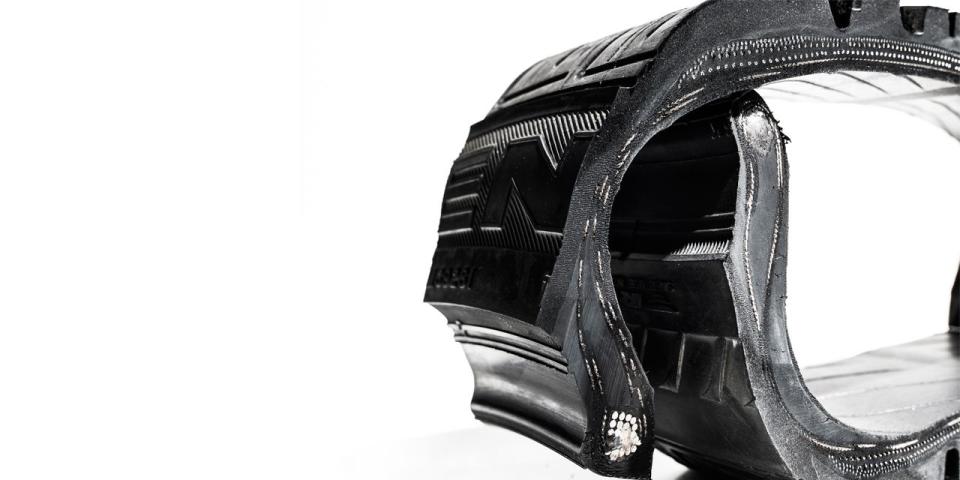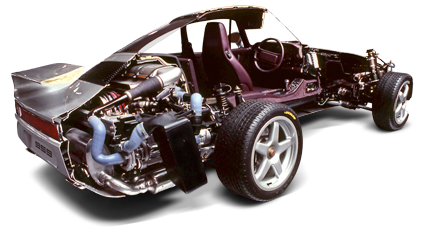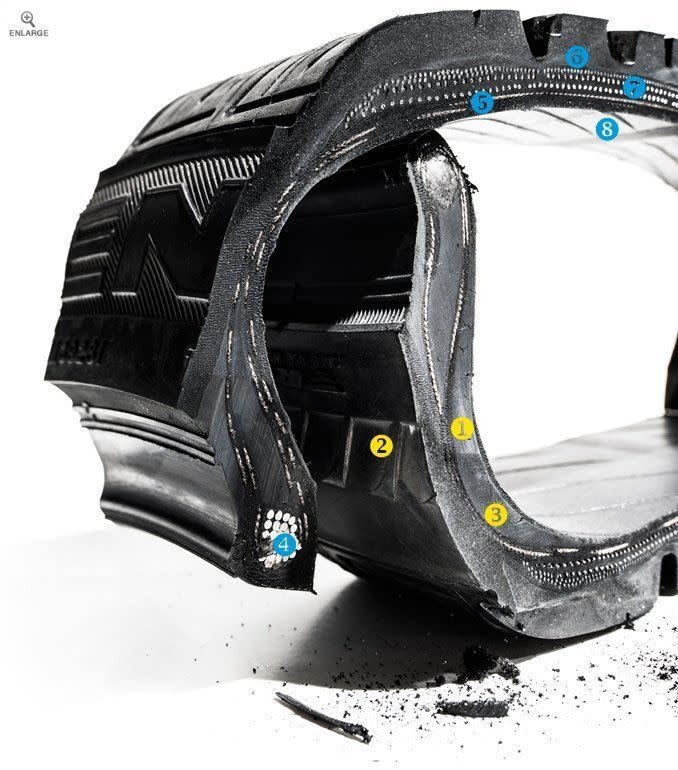Prime Cuts: The Difference Between Regular and Run-Flat Tires Revealed—By Slicing Them Open

rolling on 17s

The Porsche 959 initiated the modern run-flat era. Its Bridgestone RE71 road tires featured Dunlop's Denloc bead profile and were constructed to retain their integrity in the event of a high-speed deflation.The Porsche 959 initiated the modern run-flat era. Its Bridgestone RE71 road tires featured Dunlop's Denloc bead profile and were constructed to retain their integrity in the event of a high-speed deflation.
From the May 2013 Issue of Car and Driver
Modern run-flat tires rely on strong, stiff sidewalls to carry the vehicle’s weight when air pressure dissipates. Extracting 50 miles of use from a flat tire, however, requires more than strength. Driving on a deflated tire—run-flat or not—initiates a destructive cycle: As the sidewall collapses, increased friction generates more heat, which softens the rubber and causes the sidewall to sag even further. A run-flat tire must support the weight of the vehicle and endure this damaging heat buildup. To see what separates a run-flat from a conventional tire—and what justifies a $40 premium, in this case, or about 20 percent—we sliced into a Bridgestone Potenza RE960AS Pole Position [top] and its run-flat variant. Here’s what the saw revealed.


applies to both tires

run-flat only

SIDEWALL INSERT
In this 225/45R-17 tire, an extra 5 millimeters (0.2 inch) of rubber carries the vehicle's weight when pressure decamps. By using thinner and softer rubber than what was used in early run-flats, the sidewall of the RE960AS RFT can be as little as 5 percent stiffer than the standard version. (Sizes with taller sidewalls require greater stiffness.) The weight penalty of a run-flat also has been cut in half to about two pounds over a (same-size) standard tire.

COOLING FINS
These ridges disrupt airflow, cooling the sidewall. After 10 minutes of running at zero pressure, a tire with fins is cooler by about 20 degrees Fahrenheit than a tire without them.

COMPLEX COMPOUND
There's more to the sidewall insert than added material. The chemical makeup of its rubber polymer is altered with an open link at the end of the molecular chain. This allows it to bond with the carbon mixed into the compound, resulting in a more uniform distribution of carbon around the tire. This homogeneity lessens the carbon-on-carbon friction that causes heat buildup, reducing temperature gains by half.

BEAD
This bundle of heavy steel wires holds the tire against the wheel, forming an airtight seal and preventing slip.

STEEL BELTS
The foundation for the tread, these resist impacts and punctures. The belts also hold the tread flat on the road.

CAP PLIES
Usually found on premium and performance tires, these nylon layers control the shape and size of the contact patch under the stresses of acceleration, braking, and cornering.

BODY PLIES
Thin textile cords bonded into the rubber give the tire its strength. The RE960AS run-flat has a rayon body ply that is more heat resistant (but also more expensive) than the polyester ply in the standard tire.

INNER LINER
A thin layer of impermeable synthetic rubber retains the pressurized air.
You Might Also Like

 Yahoo Autos
Yahoo Autos 